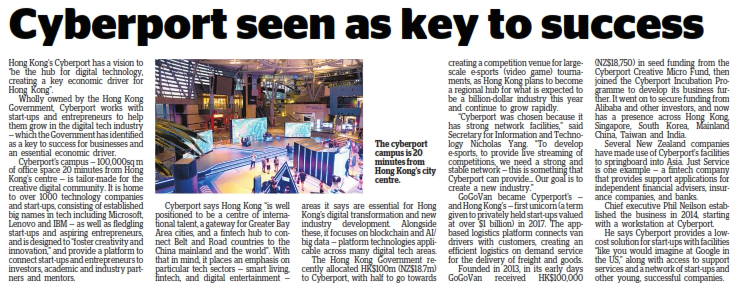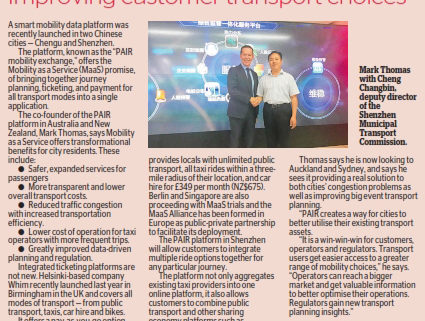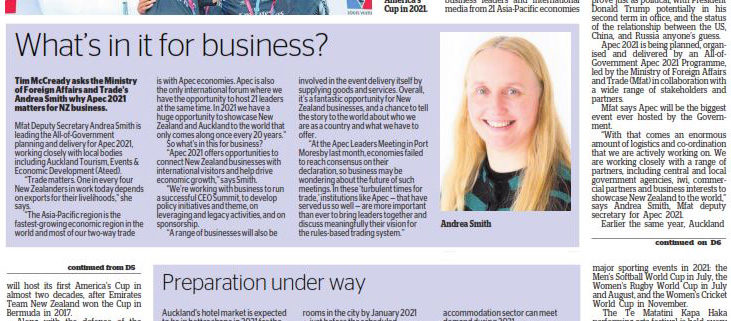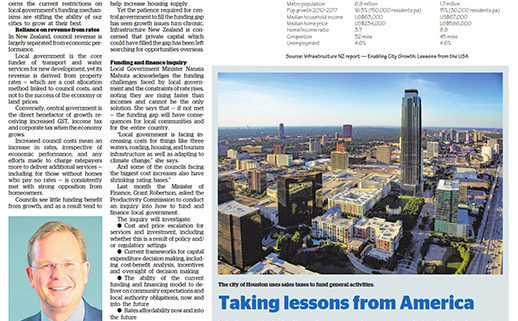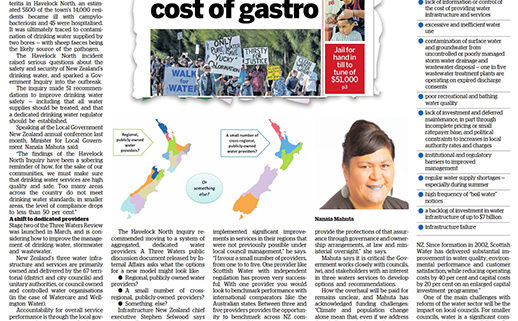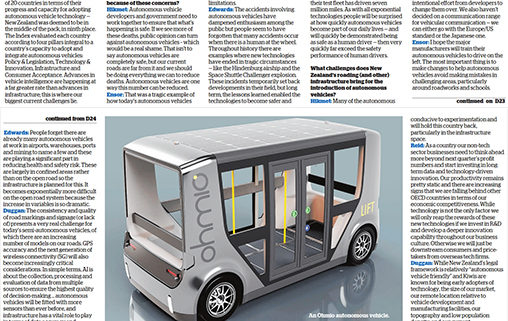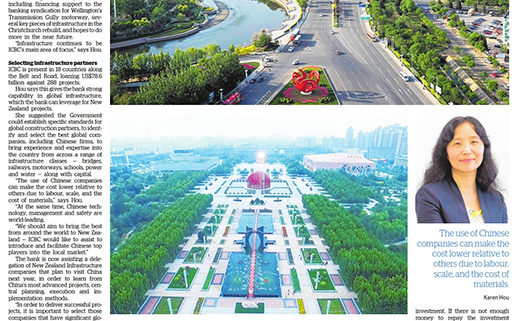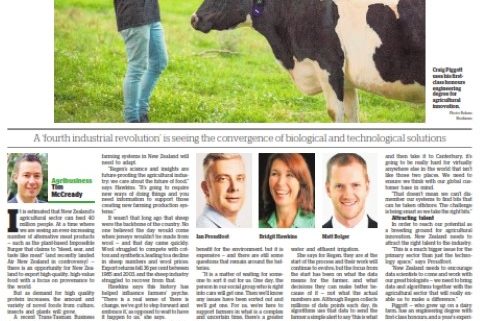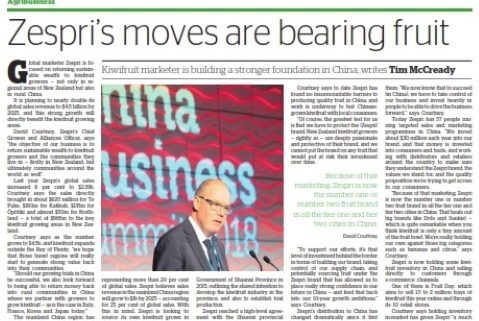2021 is shaping up to be a major year on the Auckland calendar, with major political, business, sporting and cultural events taking place.
The annual Asia-Pacific Economic Co-operation (Apec) will be held in Auckland for the first time in 22 years. Hosting Apec involves a 12-month period from December 2020 to November 2021, culminating in the leaders’ meeting where political leaders, their ministers of trade and foreign affairs, CEOs, youth leaders, business leaders and international media from 21 Asia-Pacific economies will descend on the City of Sails.
Apec was last held in Auckland in 1999, and saw US President Bill Clinton arrive to a ‘rock star’ welcome and also marked the first visit to New Zealand by a Head of State from China — then-President Jiang Zemin.
While in Auckland in 1999, the world’s two biggest powers — China and the United States — resumed talks during an hour-long meeting, after heightened tensions following the accidental bombing of the Chinese Embassy in Belgrade during the NATO bombing of Yugoslavia.
This time around will no doubt prove just as political, with President Donald Trump potentially in his second term in office, and the status of the relationship between the US, China, and Russia anyone’s guess.
Apec 2021 is being planned, organised and delivered by an All-of-Government Apec 2021 Programme, led by the Ministry of Foreign Affairs and Trade (Mfat) in collaboration with a wide range of stakeholders and partners.
Mfat says Apec will be the biggest event ever hosted by the Government.
“With that comes an enormous amount of logistics and co-ordination that we are actively working on. We are working closely with a range of partners, including central and local government agencies, iwi, commercial partners and business interests to showcase New Zealand to the world,” says Andrea Smith, Mfat deputy secretary for Apec 2021.
Earlier the same year, Auckland will host its first America’s Cup in almost two decades, after Emirates Team New Zealand won the Cup in Bermuda in 2017.
Along with the defence of the oldest trophy in international sport, Auckland hopes to stage a successful event in March.
According to a report prepared for the Ministry of Business, Innovation and Employment by Market Economics, the America’s Cup is expected to deliver between $600m-$1b in value-add to the New Zealand economy over the 2018-2021 period and an employment boost of between 4700 and 8300 jobs.
The race will showcase New Zealand on a global stage, forge new business links and be the catalyst behind the development of better waterfront infrastructure.
The previous America’s Cup regattas held in Auckland in 2000 and 2003 each generated around half a billion dollars of economic activity.
Auckland Tourism, Events & Economic Development (Ateed) says collaboration will be critical for both major events: “2021 will certainly be a bumper year with major events spread throughout the year and Auckland will be ready to welcome these events,” says Steve Armitage, General Manager Destination.
“A collaborative programme between the Auckland Council Group, the Ministry of Business, Innovation and Employment, Mana Whenua and America’s Cup Event Ltd is already well established and working diligently to prepare for the 36th America’s Cup, while Ateed and Mfat have signed a Memorandum of Understanding and are working together with other government agencies to prepare for Apec 2021.”
Auckland will also host three other major sporting events in 2021: the Men’s Softball World Cup in July, the Women’s Rugby World Cup in July and August, and the Women’s Cricket World Cup in November.
The Te Matatini Kapa Haka performing arts festival is held every two years at different locations in New Zealand. In February 2021 it will also take place in Auckland, and is expected to draw in around 30,000 participants and spectators.
Says Armitage: “We see 2021 as a significant opportunity to advance the outcomes of the city’s destination strategy — Destination AKL2025 — which has an increased focus on destination management and sustainability that will add value for Aucklanders and our visitors.
“Over the past decade Auckland has built an enviable reputation for hosting a diverse range of global major events, showcasing the city, delivering an outstanding experience for visitors and leaving a favourable, lasting impression.”
New Zealand certainly left an impression on President Clinton. Before departing in 1999, he said: “This has been a magical trip.
“I think every person, when he or she is young, dreams of finding some enchanted place, of beautiful mountains and breathtaking coastline, clear lakes and amazing wildlife.
“Most people give up on it because they never get to New Zealand.”
Preparation under way
Auckland’s hotel market is expected to be in better shape in 2021 for the 36th America’s Cup compared to the 2000 or 2003 Cup defences in Auckland.
The city’s newest hotel, the five-star SO Sofitel, opened last month offering a volcanic theme throughout the hotel’s 130 rooms that range from $469 to $4500 a night.
Other hotels under way include the five-star Park Hyatt (195 rooms, opening 2019), SKYCITY Horizon (300 rooms, opening 2019), the Cordis extension (additional 250 rooms, opening 2020), Novotel (310 rooms, opening 2020).
But there are still concerns from some in the tourism industry that a shortage of hotel accommodation is likely.
Research from commercial real estate firm CBRE has found, based on the current pipeline of hotels planned or under construction, that there will be an additional 2200 rooms in the city by January 2021 — just before the scheduled America’s Cup race — on top of the current supply of 10,000 rooms.
But as international and domestic tourism markets continue to grow, hotel room demand will increase over the next three years. Even with the new builds taking place, demand will likely exceed supply by the time Team New Zealand set sail.
However, Peter Hamilton, director hotels, valuation and advisory services at CBRE New Zealand said other accommodation providers — such as private rooms through the likes of Airbnb — would ease accommodation pressures while the Cup is contested.
Over leaders’ week, Apec will see an estimated 10,000-13,500 attendees arrive. It is likely that the US, China and Russia will each take over entire hotels with officials, business delegations, and security.
With events spread throughout the year, Ateed is confident that the accommodation sector can meet demand during 2021.
“Apec Leaders’ Week takes place for a short time during the off-peak period in early November,” says Ateed’s GM Destination Steve Armitage. “There are a number of infrastructure projects underway to support Auckland’s growth and improve the visitor experience, many of which are in the CBD and waterfront area and will be complete or well advanced by 2021.
“An important legacy of the major events the city has successfully hosted is that we have significantly increased our capacity and capability. The city is better placed to ensure the success of 2021.
“The most important message is to plan ahead for Leaders’ Week. We are working closely with Mfat and our partners in the tourism and accommodation sector to help people do exactly that.”
What’s in it for business?
Tim McCready asks the Ministry of Foreign Affairs and Trade’s Andrea Smith why Apec 2021 matters for NZ business.
Mfat Deputy Secretary Andrea Smith is leading the All-of-Government planning and delivery for Apec 2021, working closely with local bodies including Auckland Tourism, Events & Economic Development (Ateed).
“Trade matters. One in every four New Zealanders in work today depends on exports for their livelihoods,” she says.
“The Asia-Pacific region is the fastest-growing economic region in the world and most of our two-way trade is with Apec economies. Apec is also the only international forum where we have the opportunity to host 21 leaders at the same time. In 2021 we have a huge opportunity to showcase New Zealand and Auckland to the world that only comes along once every 20 years.”
So what’s in this for business?
“Apec 2021 offers opportunities to connect New Zealand businesses with international visitors and help drive economic growth,” says Smith.
“We’re working with business to run a successful CEO Summit, to develop policy initiatives and theme, on leveraging and legacy activities, and on sponsorship.
“A range of businesses will also be involved in the event delivery itself by supplying goods and services. Overall, it’s a fantastic opportunity for New Zealand businesses, and a chance to tell the story to the world about who we are as a country and what we have to offer.
“At the Apec Leaders Meeting in Port Moresby last month, economies failed to reach consensus on their declaration, so business may be wondering about the future of such meetings. In these ‘turbulent times for trade,’ institutions like Apec — that have served us so well — are more important than ever to bring leaders together and discuss meaningfully their vision for the rules-based trading system.”

